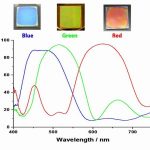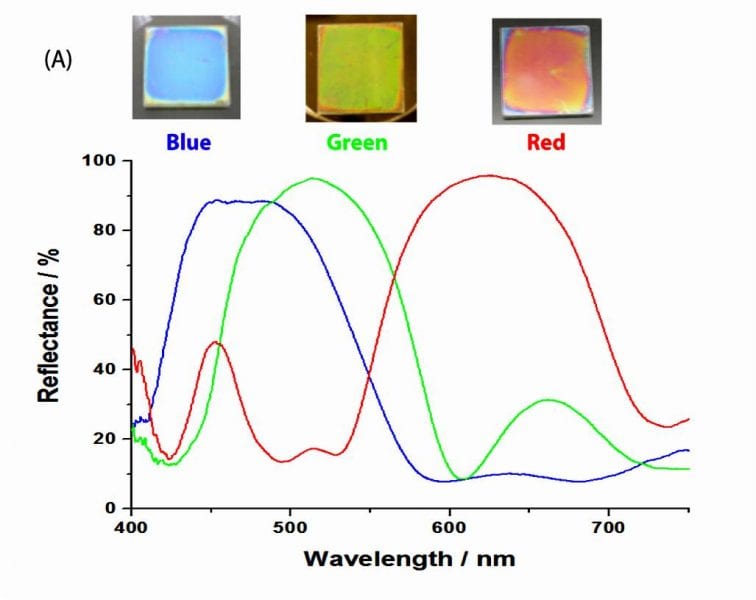 Welcome to one of our guest columns, where active researchers can share their views on topics relevant to materials science. Professor Geoffrey Ozin from the University of Toronto talks about what thin films of nanoparticles can do to light.
Welcome to one of our guest columns, where active researchers can share their views on topics relevant to materials science. Professor Geoffrey Ozin from the University of Toronto talks about what thin films of nanoparticles can do to light.
There is a lot to brag about these days in the field of nanoparticles. Control of their composition, size and shape, surface chemical and physical properties, and self-assembly into a myriad of forms are notable contributions of a nanochemistry approach to their study. They are attracting increasing interest for integration into advanced materials and biomedical devices.
Colloidal stability enables the formation of thin films of nanoparticles by simple techniques such as spin and dip coating. Thin films can be formed from many types of nanoparticles, regardless of whether they are mono- or polydispersed in size and spherical or non-spherical in shape. By stacking multiple nanoparticle films of different refractive indices on top of one another it is possible to create superlattices with photonic properties that are dependent upon the geometrical thickness and refractive index of the component layers. This kind of multilayer architecture has an interesting history.
Lord Rayleigh in 1887 first studied the interaction of light with this kind of periodic multilayer film and recognized that the interference of light reflected at the interfaces of the constituent layers could give rise to strong reflection of certain wavelengths by constructive interference of reflected waves, and zero reflection of others by destructive interference. This was the first work on what are now often referred to as Bragg mirrors (after W. Bragg and W. H. Bragg who performed extensive work on diffraction and are nowadays probably best remembered for pioneering X-ray crystallography) or one-dimensional photonic crystals. These mirrors, which are ubiquitous in modern optics labs, can easily be designed to exhibit a large spectral range of intense (commercial Bragg mirrors with reflectivities above 99% are available – exceeding that available from any metallic mirror) reflectivity known as the stopband. As well as finding their way onto optical tables in physics departments around the world, many scientists are pursuing applications that exploit the ability of Bragg mirrors and other photonic crystals to manipulate light by means of functional defects and amplify light by the use of the slow photon effect, finding utility in enhanced efficiency solar cells and light-emitting diodes, as well as highly reflective cavities in lasers and fiber Bragg gratings for reflecting a particular wavelength of light while transmitting all others.
These devices typically employ Bragg mirrors made of non-porous layers of materials like silicon nitride, magnesium fluoride, aluminum and silicon oxides, deposited by top-down methods such as plasma-enhanced chemical vapor deposition (PECVD). The resulting dense layers with no intrinsic possibility for active reflectivity tuning, means that these materials form passive optical components.
On the other hand, via the introduction of porosity, a Bragg mirror can be made active and display broadband tuning of its reflective properties through externally stimulated physically, chemically or biochemically induced changes in the thickness or refractive index of the component layers. Nanoporosity can be introduced into the layers of a Bragg mirror through colloidal assembly of intelligent nanoparticles such as metal oxides, clays, mesoporous materials and zeolites into multilayer thin films, exemplified in the Figure for three npTiO2-npSiO2 Bragg mirrors with stopbands at the wavelengths of the primary red, green and blue colors. The internal surface area and porosity of this new-generation Bragg mirror can be very high reaching 200-500 m2 g-1 and 50% porosity, enabling the housing of all sorts of encapsulated guests like dyes and polymers (an architecture which has been shown to function as a laser – quite an achievement for something which at a glance appears rather crude) as well as allowing the adsorption and desorption of many kinds of analytes into and out of the voids, which has been exploited for chemical sensing directed towards a color-sensitive photonic nose and a color-coded drug delivery device.
Many types of smart nanoparticles can be readily integrated into the nanoparticle layers of Bragg mirrors including ones with photocatalytic, plasmonic, photoluminescent, photoelectrochemical, photosensitization and up-converting properties designed to improve the efficiency of light-driven processes and devices including antipollution coatings, water splitting and solar cells. The range of opportunities for nanoparticle Bragg mirrors can be further enriched and expanded by making hierarchical architectures that enable light to be managed in these devices over wider spectral ranges, even to create a white light Bragg mirror. This can be achieved by introducing multiple stopbands into Bragg mirrors through tandem and gradient arrangements of constituent nanoparticle layers.
Now that’s something to brag about!
Image Credit: Dr. Daniel Puzzo

















